Sagar Sharma
A Comparative Study of Image Disguising Methods for Confidential Outsourced Learning
Dec 31, 2022



Abstract:Large training data and expensive model tweaking are standard features of deep learning for images. As a result, data owners often utilize cloud resources to develop large-scale complex models, which raises privacy concerns. Existing solutions are either too expensive to be practical or do not sufficiently protect the confidentiality of data and models. In this paper, we study and compare novel \emph{image disguising} mechanisms, DisguisedNets and InstaHide, aiming to achieve a better trade-off among the level of protection for outsourced DNN model training, the expenses, and the utility of data. DisguisedNets are novel combinations of image blocktization, block-level random permutation, and two block-level secure transformations: random multidimensional projection (RMT) and AES pixel-level encryption (AES). InstaHide is an image mixup and random pixel flipping technique \cite{huang20}. We have analyzed and evaluated them under a multi-level threat model. RMT provides a better security guarantee than InstaHide, under the Level-1 adversarial knowledge with well-preserved model quality. In contrast, AES provides a security guarantee under the Level-2 adversarial knowledge, but it may affect model quality more. The unique features of image disguising also help us to protect models from model-targeted attacks. We have done an extensive experimental evaluation to understand how these methods work in different settings for different datasets.
Confidential Machine Learning on Untrusted Platforms: A Survey
Dec 15, 2020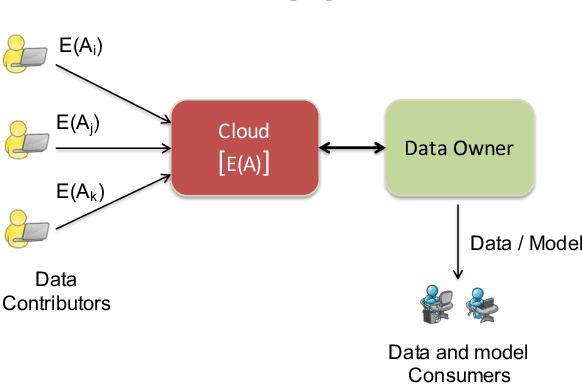
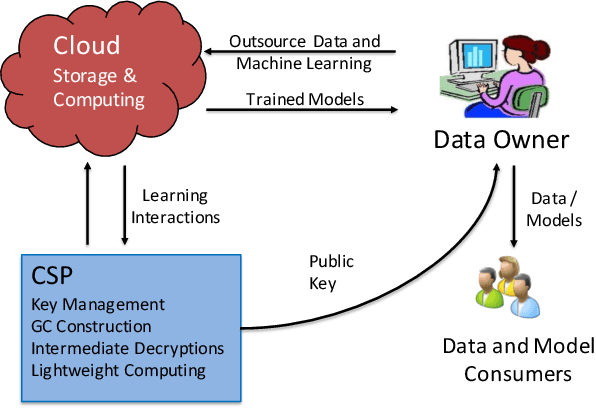
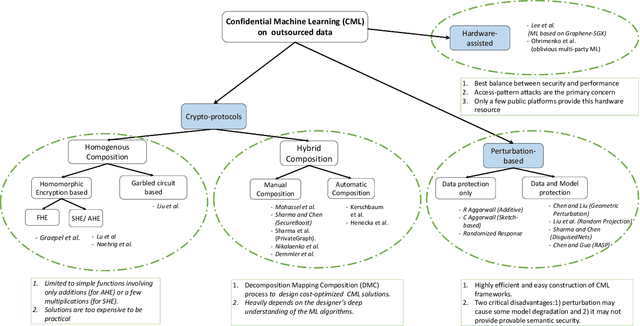
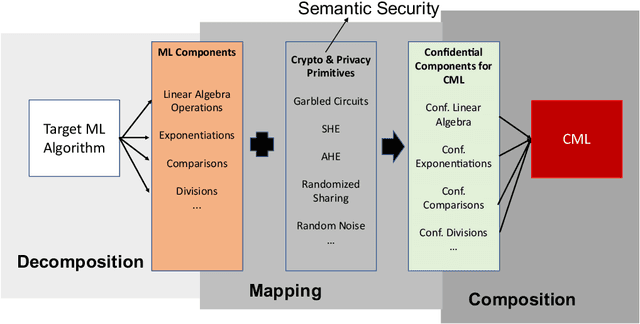
Abstract:With ever-growing data and the need for developing powerful machine learning models, data owners increasingly depend on untrusted platforms (e.g., public clouds, edges, and machine learning service providers). However, sensitive data and models become susceptible to unauthorized access, misuse, and privacy compromises. Recently, a body of research has been developed to train machine learning models on encrypted outsourced data with untrusted platforms. In this survey, we summarize the studies in this emerging area with a unified framework to highlight the major challenges and approaches. We will focus on the cryptographic approaches for confidential machine learning (CML), while also covering other directions such as perturbation-based approaches and CML in the hardware-assisted confidential computing environment. The discussion will take a holistic way to consider a rich context of the related threat models, security assumptions, attacks, design philosophies, and associated trade-offs amongst data utility, cost, and confidentiality.
Disguised-Nets: Image Disguising for Privacy-preserving Deep Learning
Feb 05, 2019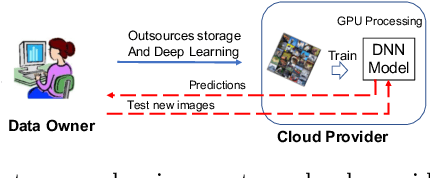
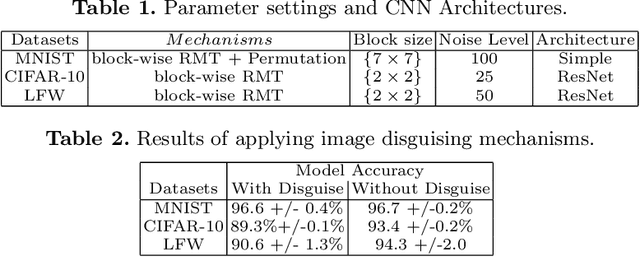


Abstract:Due to the high training costs of deep learning, model developers often rent cloud GPU servers to achieve better efficiency. However, this practice raises privacy concerns. An adversarial party may be interested in 1) personal identifiable information encoded in the training data and the learned models, 2) misusing the sensitive models for its own benefits, or 3) launching model inversion (MIA) and generative adversarial network (GAN) attacks to reconstruct replicas of training data (e.g., sensitive images). Learning from encrypted data seems impractical due to the large training data and expensive learning algorithms, while differential-privacy based approaches have to make significant trade-offs between privacy and model quality. We investigate the use of image disguising techniques to protect both data and model privacy. Our preliminary results show that with block-wise permutation and transformations, surprisingly, disguised images still give reasonably well performing deep neural networks (DNN). The disguised images are also resilient to the deep-learning enhanced visual discrimination attack and provide an extra layer of protection from MIA and GAN attacks.
 Add to Chrome
Add to Chrome Add to Firefox
Add to Firefox Add to Edge
Add to Edge